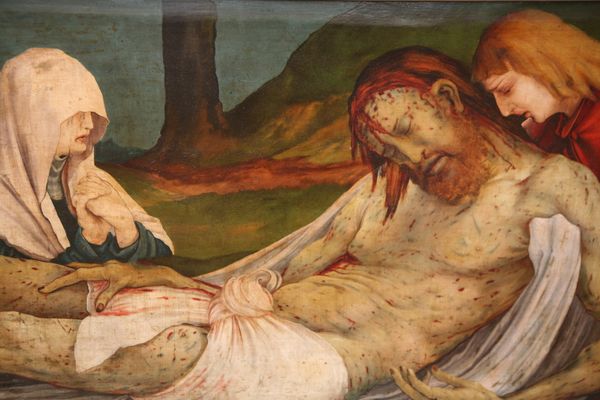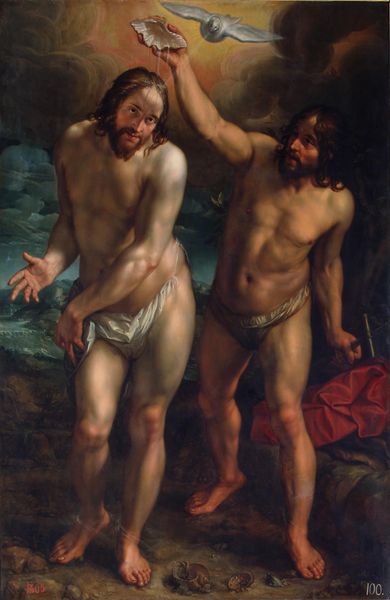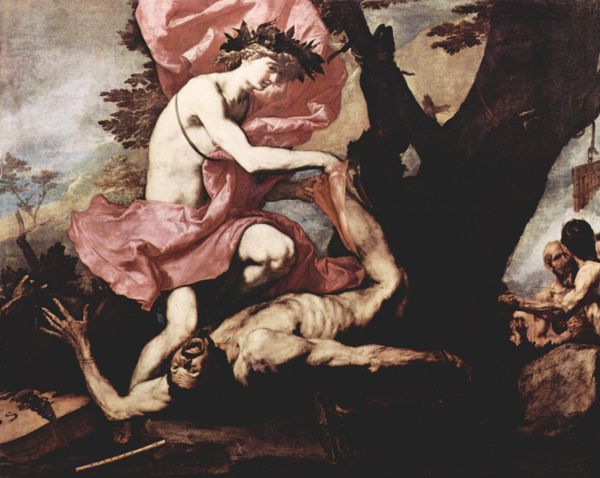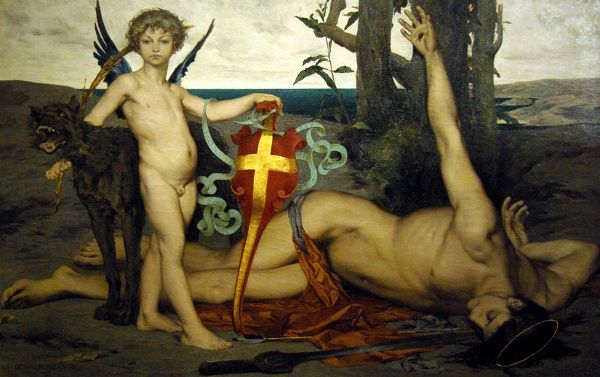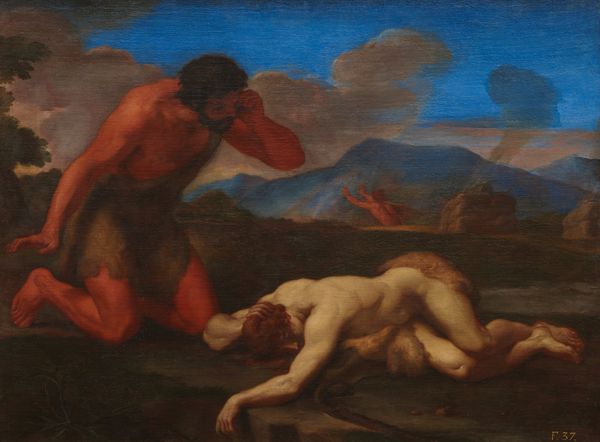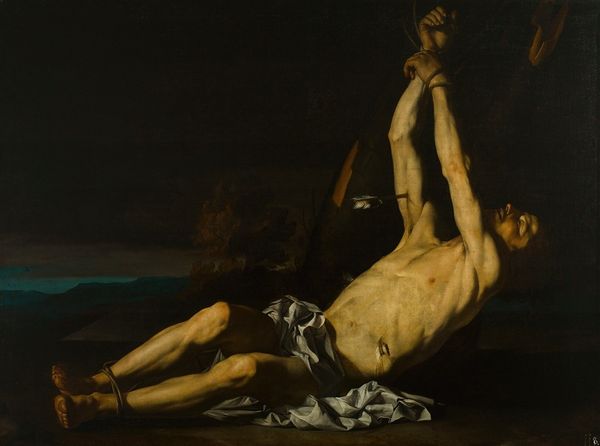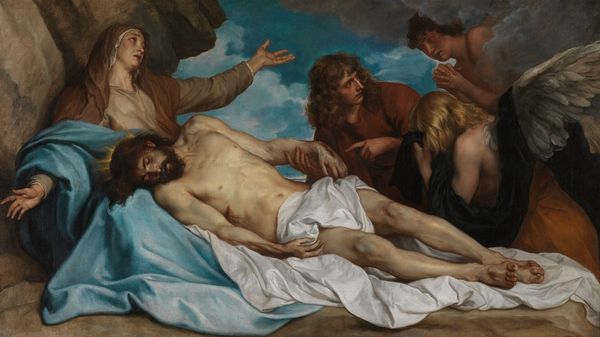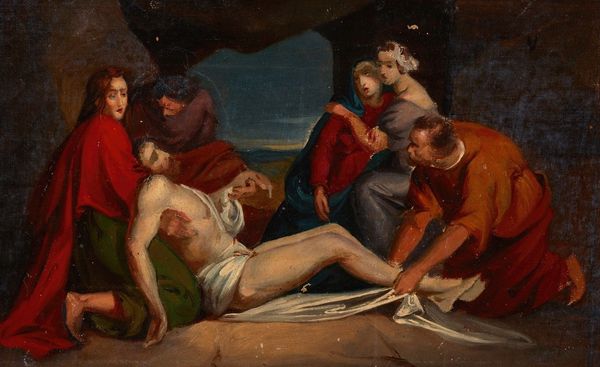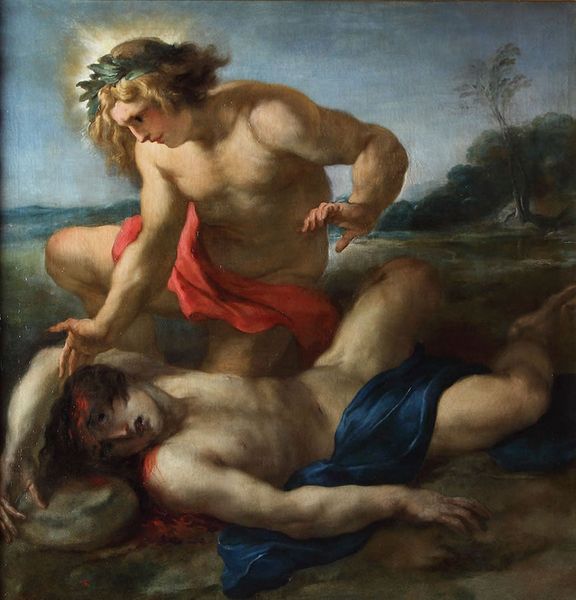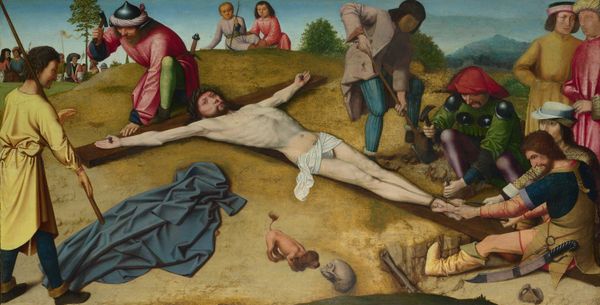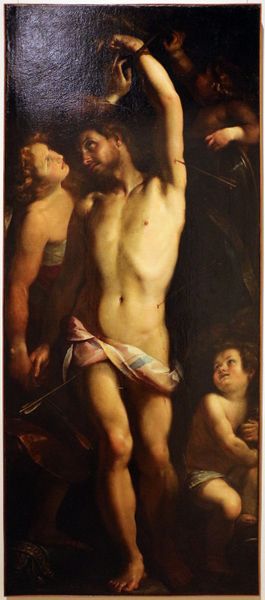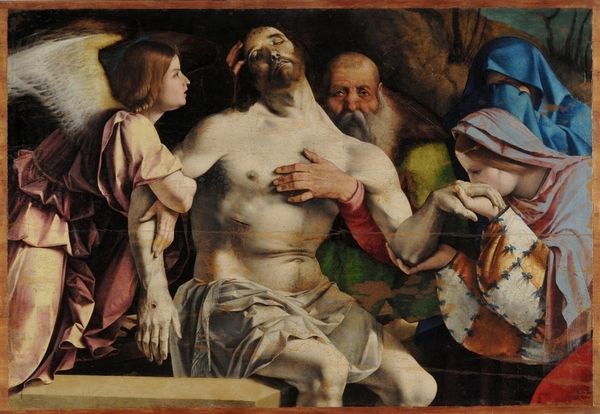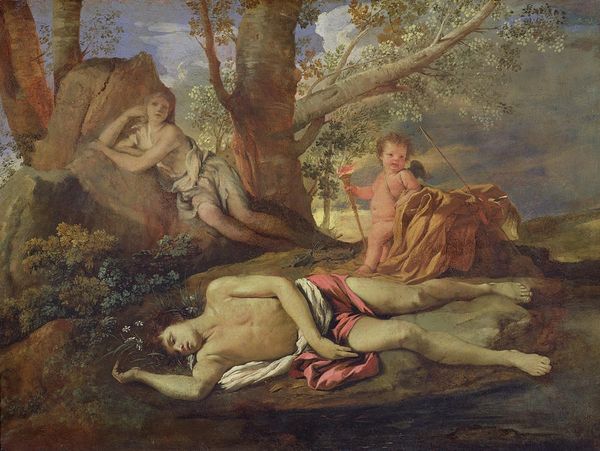
#
gouache
#
impressionistic
#
fantasy art
#
possibly oil pastel
#
neo expressionist
#
underpainting
#
pastel chalk drawing
#
mythology
#
painting painterly
#
abstract character
#
watercolor
Copyright: Public domain
Curator: This is Rodolfo Amoedo's "The Last Tamoio," painted in 1883. Editor: The stark realism combined with what seems to be gouache lends a certain…melancholy. There’s a palpable sense of loss. Curator: The composition certainly drives that point home. Notice how the Tamoio's horizontal body is echoed by the receding shoreline. That parallelism emphasizes his stillness, his passivity in the face of…what, precisely? And what about the monk, hovering above the native? There's an intriguing tension there. Editor: That's exactly where my attention goes too. It is unclear who this monk is to the native on the sand. It evokes such clear cultural shifts in Brazil following contact with Europeans and an era marked by profound transformation and, of course, conflict. Is the friar an omen? Curator: Perhaps. Consider the contrast between the muted, earthy tones of the monk’s robe and the paler, almost luminous flesh of the Tamoio. It accentuates a symbolic reading, doesn't it? Almost an idealized natural figure juxtaposed with one of restraint. It points to inherent cultural value at play. Editor: Agreed. But it also brings to mind that at this time, depictions of Indigenous peoples were shifting, moving toward narratives that would validate state expansionist ideas. Curator: Indeed, the academicism is present, isn’t it? It is an odd romanticization coupled with clear realism of form. Note the almost photorealistic treatment of the light and shadows across his body and his arm resting in the foamy waves, then the stark interruption of that, that interruption of realism by the dark, almost impenetrable shade, as in the shadowy backdrop to it all. A world unseeing. Editor: So true. And I’d even add, the positioning, especially given that horizontal landscape. It emphasizes isolation and that sense of finality. It evokes these powerful tensions about identity, conquest, and displacement that were prevalent at the time. Curator: Yes, and by isolating them at the beach with the monk he amplifies the complex interplay between different worlds and fading customs. Editor: Pondering it all I find that Amoedo invites contemplation and reflection. Curator: I agree. Ultimately, Amoedo’s strategic formal elements create this powerful, haunting commentary that speaks to the lasting imprint of history and artistic expression in the canvas before us.
Comments
No comments
Be the first to comment and join the conversation on the ultimate creative platform.
